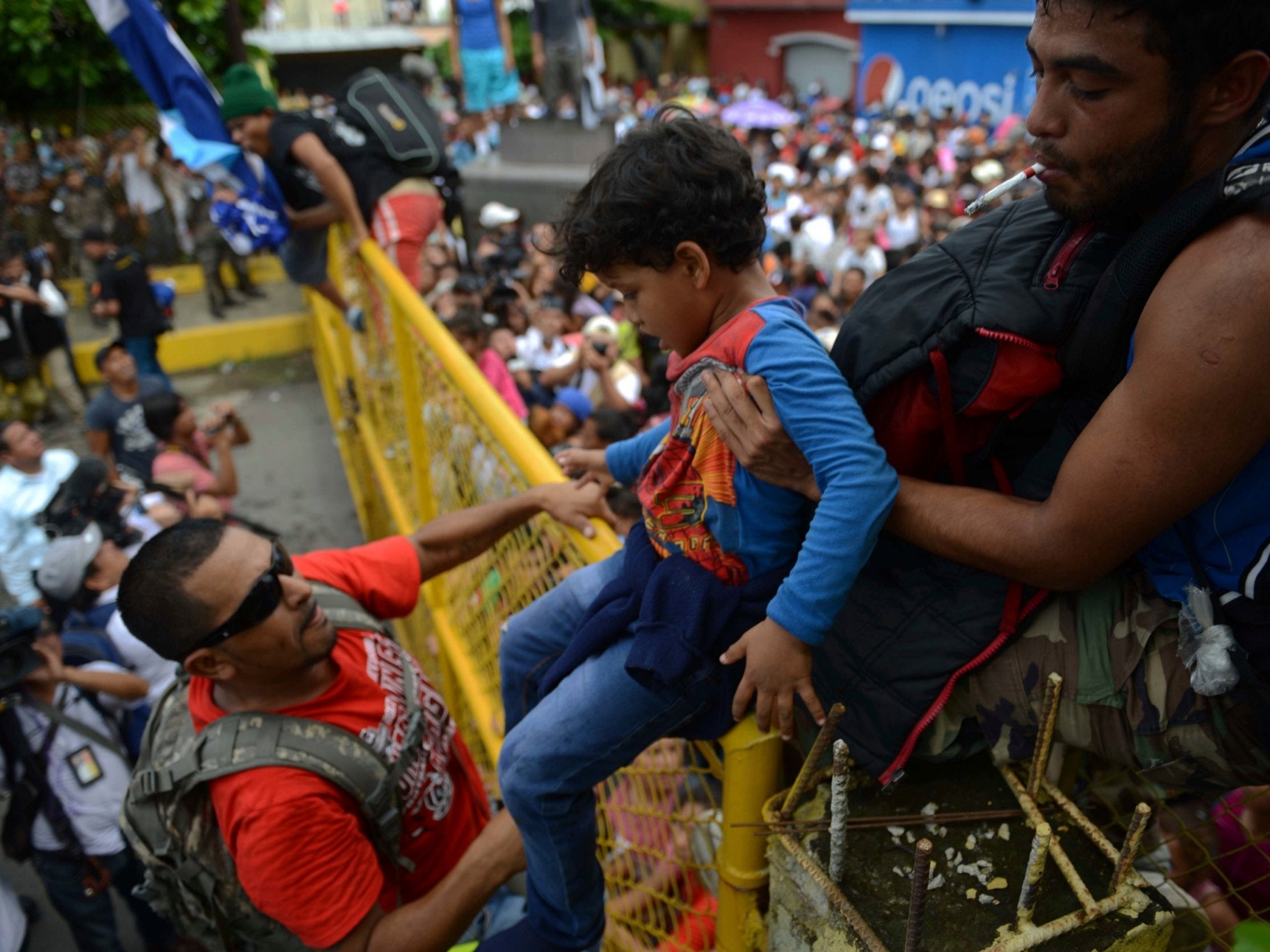Migrant caravan traveling through Guatemala tears down barriers at Mexican border
The US and Mexican governments have met to discuss the caravan, which includes as many as 4,000 people

Migrants in a caravan making its way north through Central America towards the US border have torn down gates and are making their way over a bridge into Mexico - with officials warning the trip will bring swift retribution from the Trump administration.
Young men in the caravan reportedly began on Friday violently tugging at a tall yellow fence in the way of the group before eventually tearing the barrier down. Men, women, and children then began rushing towards the bridge to Mexico that stands about 150 years (137 meters) away.
The fence toppling came just after US Secretary of State Mike Pompeo met with Mexican Foreign Minister Luis Videgaray to discuss the caravan, which started in Honduras last weekend.
“It’s a challenge that Mexico is facing, and that’s how I expressed it to Secretary Pompeo,” Mr Videgaray said in a news conference with the US secretary of state.
The Mexican government has asked for assistance from the United Nations refugee agency to help it process migrants arriving on the country’s southern border and seeking refugee status.
Processing those refugee claims could allow the Mexican government to disperse the caravan, and placate President Donald Trump, who is adamantly opposed to allowing any of the individuals into the US.
The caravan that is now at the Mexico border is composed of several thousand Honduran migrants who are seeking to scape violence and poverty in their home country. Mr Videgaray said earlier on Friday that the caravan was composed of some 4,000 people and each could present their claims to enter the country with refugee status.
“We haven’t had a caravan or group of this size seeking refuge at the same time, that’s why we’ve sought the support of the United Nations,” he said on Mexican television.
The Mexican government is taking a different tact with this caravan than a similar one that made its way north earlier this year, similarly drawing anger from Mr Trump.
Unlike that caravan, which made its way into the heartland of Mexico before officials attempted to process claims, the Mexican government this time is focusing on processing the individuals as they arrive on the border.
In response to the advancing caravan, Mr Trump has threatened to instruct the US military to “CLOSE THE SOUTHERN BORDER”, and said that he would cut aid to Central American countries where the migrants are arriving from.
It is not clear if Mr Trump is seriously considering closing the US-Mexico border, and it is not clear that he could conceivably do so, either. But, if he did, experts say that such a closure would have a major impact on the economy and ability of people to travel in and out of the US.
“A shutdown of the border, even for a temporary period of time, would have dramatic and devastating economic consequences,” Peter Boogaard, a former Homeland Security official during the Obama administration who now works for the immigration advocacy group FWD.us, told USA Today.

Presidents have rarely exercised their ability to shut down portions of the border. President George W Bush close part of the border following the 11 September terrorist attacks in order to process full inspections of incoming vehicles. President Ronald Reagan also closed some ports of entry along the US-Mexico border in 1985 after the kidnapping and murder of a DEA agent in Mexico.
The Associated Press and Reuters contributed to this report
Join our commenting forum
Join thought-provoking conversations, follow other Independent readers and see their replies
Comments